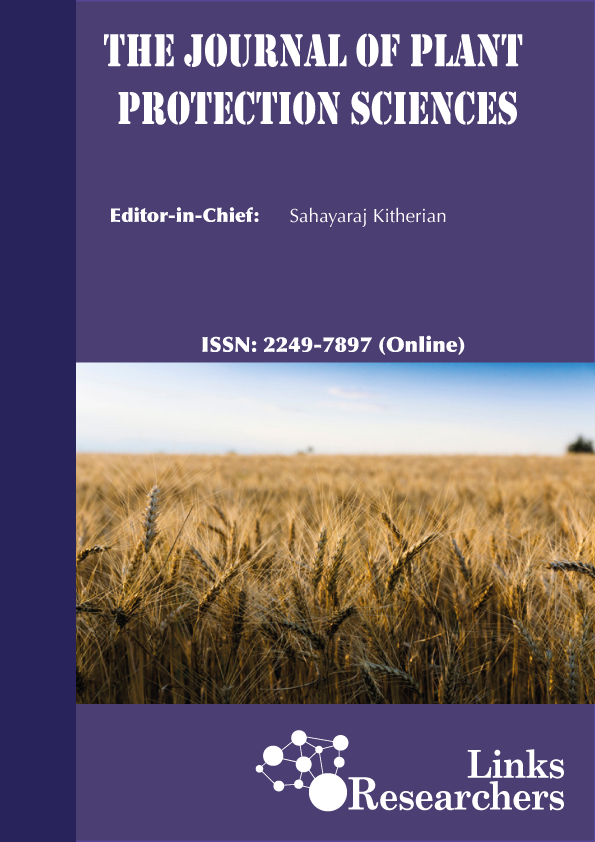Manzoor Hussain*, Miloslav Zouhar and Pavel Rysanek
Halide Nihal Açikgöz1*, Serdal Kenan Köse2 and Ali Açikgöz3
Muhammad Imran*, Munir Ahmad, Muhammad Naeem, Muhammad Farooq Nasir, Imran Bodlah, Muhammad Nasir and Umer Ayyaz Aslam Sheikh
Manzoor Hussain*, Miloslav Zouhar and Pavel Ryšánek
Saqib Ali1, Suliman Ali1, Lina1, Wen Zhou1, Muhammad Irfan Waris1, Ashfaq Ali2 and Man Qun Wang1,*
K.N. Ahmed and M.R. Hasan
SK Fashi Alam, Atanu Seni and Ajoy K Sahoo
Dhananjoy Mandal
Asrar Ali*, Ehsan-ul-Haq**, Abdul Rehman***, Javed Khan, Waseem Ahmad Gillani** and Maria Rauf*
Javed Khan*, Ehsan-ul-Haq*, Habib Iqbal Javed*, Tariq Mahmood*,
Awais Rasool*, Naheed Akhtar and Saleem Abid**
Bina Khanzada1*, Ghulam Hussain Abro1, Tajwar Sultana Syed1 and Nazir Ahmed2
Rahat Afza, Muhammad Asam Riaz*, Muhammad Afzal and Muhammad Zeeshan Majeed
Bina Khanzada1, Arfan Ahmed Gilal1*, Bhai Khan Solangi1 and Imtiaz Ahmed Nizamani2
Muhammad Afzal1, Muhammad Irfan Ullah1*, Muhammad Hamid Bashir2, Shah Najaf Mukhtar1, Muhammad Arshad1, Nimra Altaf1
Ghulam Murtaza1*, Muhammad Ramzan2, Assad Ullah3, Abid Ali5, Ayesha Zafar3, Rukhsar Beanish3, Ahmad Ali4, Ghulam Mustafa4 and Mudassar Aslam4
Gulnaz Ismaylova
Qurban Ali1, Muhammad Faheem Akhtar1, Asad Aslam1*, Muhammad Shehzad2, Muhammad Jamal2, Humaira Malik1, Imran Nadeem1, Aqsa Abbas1, Muhammad Jawad Saleem1, Tamsila Nazir1 and Kanwal Hanif1
Saeed Ahmed Essote1, Asim Iqbal1, Muhammad Kamran Taj2*, Asmatullah Kakar1, Imran Taj2, Shahab-ud-Din Kakar1 and Imran Ali 3,4*
Muhammad Tahir Jan1, Sarfraz Ali Shad2, Mushtaq Ahmad Saleem3 and Muhammad Binyameen2,*
Muhammad Salman*, Muhammad Hamayoon Khan, Muhammad Zahid, Gul Zamin Khan, Fazli Rahim and Usman Khalique
Mona M. Osman1, Kamelia M. Osman2, Manal Abu Elmakarem Mohamed1, Mahmoud E. Hashad2, Jeeser Alves Almeida3, Alaa Saad4, Octavio Luiz Franco5,6, Heba N. Deif 2*
Bilal Dik1, Saima Naz2*, Muhammad Sohail Sajid3,4
Keywords | Accipitriformes; Amblycera; Ischnocera; Phthiraptera; Turkey.
...Abdul Latif1, Shahid Sattar1, Fazal Maula2, Imtiaz Khan4*, Asim Iqbal3 and Said Hussain Shah1*
Syed Ishfaq Ali Shah1,3, Azaz Ahmad2 and Wanzhi Cai1,*
Nosheen Jehajo*, Nasreen Memon, Mansoor Ali Shah and Naheed Shah
Aiman Amur*, Nasreen Memon, Reshma Sahito and Seema Memon
Doungnapa Promket1,2,4*, Khanitta Pengmeesri2,4, Jennarong Kammongkun3, Thassawan Somchan2
Li Qiao*, Shubao Geng, Shibao Guo, Hongmin Liu, Jian Yin and Quan Zhang
Tasleem Akhtar1*, Muhammad Farooq Nasir2, Imran Bodlah2 and Muhammad Adnan Bodlah3
Agha Mushtaque Ahmed1*, Ali Zachi Abdul Qadeer Alhilifi2, Fahad Nazir Khoso1, Muhammad Ibrahim Kubar1, Tehniyat Naz Shah3 and Touseef Ahmed1
Ashfaq Hussain1, Javed Khan2, Ammara Blouch3, Ahmad-Ur-Rahman Saljoqi1, Ashraf Khan4,5* and Zaheer Sikandar6
Rawaa Saladdin Jumaa
Nasir Shah1,4, Muhammad Ibrahim1*, Zarnosh Habib2, Kalsoom3 and Zahir Shah4









